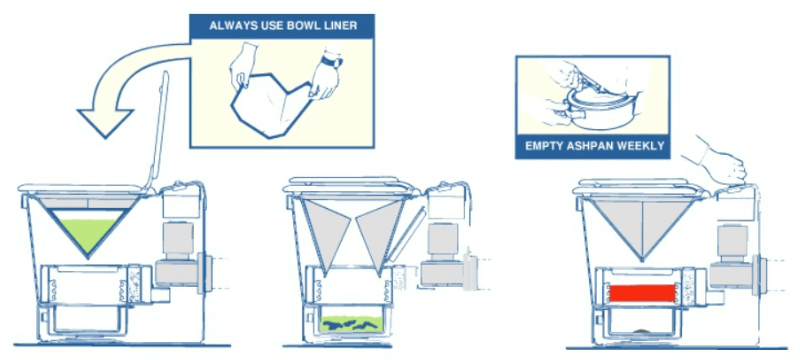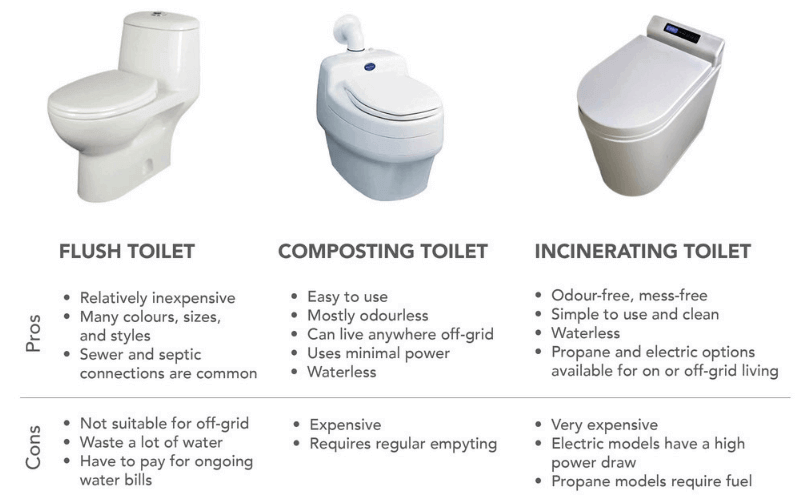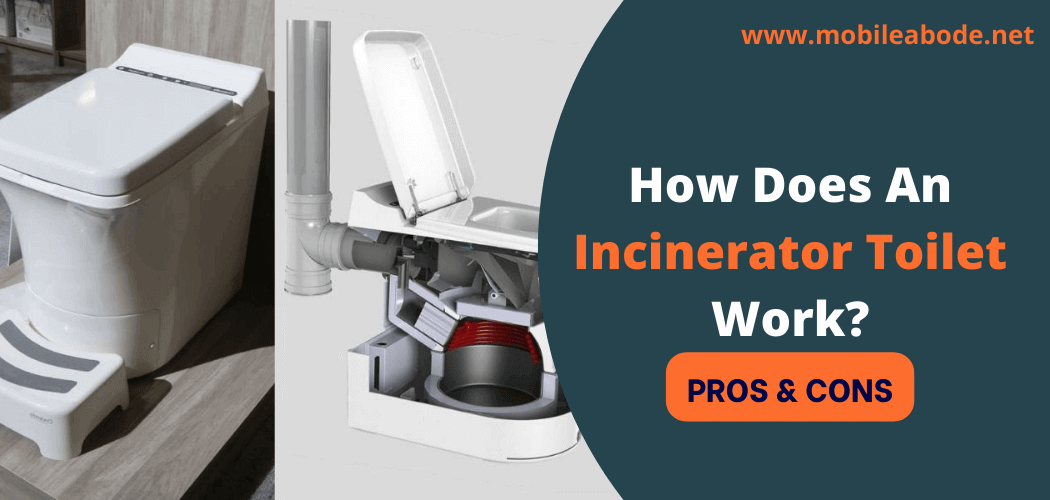In today’s world, everyone needs to do their part in preserving the environment. One way you can do this is by using an incinerator toilet.
Incinerator toilets are a type of high-efficiency toilet that uses heat to break down waste and create energy. They can be either electric or gas-powered, and they work by burning the waste in a combustion chamber. This incinerates it and creates enough heat to keep the unit warm, eliminating the need for a separate heater.
Incinerator toilets are becoming more popular because of their high efficiency and eco-friendly design.
What incinerator toilets are and how do they work?
Incinerator toilets are a type of toilet that uses extreme heat to incinerate human waste. These toilets typically reached temperatures between 1,000 and 2,000 degrees Fahrenheit, which is hot enough to completely break down human waste into its parts.
The resulting ash from an incinerator toilet can be used as fertilizer or for other purposes. Because there is no water involved in the process, these toilets are considered to be very efficient and environmentally friendly.

There are two main types of incinerator toilets: Batch and Continuous.
Batch toilets are typically found in homes and small businesses, while continuous toilets are more common in larger commercial or industrial settings.
Batch toilets work by loading a chamber with human waste and then igniting it. The chamber is left to cool before being emptied and refilled.
Continuous toilets, on the other hand, work by continuously feeding human waste into a chamber that is kept at a constant temperature. As the chamber fills up, the waste is incinerated and the resulting ash is expelled.
Both types of incinerator toilets are considered to be very effective at breaking down human waste. However, continuous toilets are generally more expensive to operate than batch toilets.
If you are considering an incinerator toilet for your home or business, it is important to research the different types of toilets and find one that best suits your needs. Incinerator toilets can be a great way to reduce your environmental footprint and save money on sewage costs.
Pros and Cons of Incinerator Toilets
Incinerator toilets have both pros and cons that should be considered before deciding whether or not to install one.
Some of the pros of incinerator toilets include:
- They are very efficient at breaking down waste, so there is little to no odor.
- They require little maintenance.
- There is no need for a water supply, which can be beneficial in areas with water shortages.
- They can be used in remote locations where there is no access to septic or sewer systems.
- Incinerator toilets can reduce the amount of solid waste that goes to landfills.
Some of the cons of incinerator toilets include:
- They require a constant source of energy (usually electricity) to operate, so they can be more expensive to maintain than other types of toilets.
- The process of incinerating waste can produce harmful emissions, so proper ventilation is necessary.
- Incinerator toilets can be noisy.
- There is a risk of fire if the incinerator unit is not maintained properly.
Overall, incinerator toilets have both advantages and disadvantages that should be considered before deciding whether or not to install one.
Comparison Incinerator Toilet with Traditional Flush Toilets
Incinerating toilets are very different from traditional flush toilets, both in terms of how they operate and how they impact the environment.
Traditional flush toilets use water to move waste through a sewer or septic system. They can use up to 27 gallons of water per day, which is a significant amount of resources.
In addition, the sewage generated by flush toilets often contains harmful bacteria that can contaminate drinking water supplies and cause illness.
On the other hand, incinerating toilets do not rely on water to operate. They use heat to break down waste and produce ash that can be safely disposed of in a garbage can or dumpster. Because they don’t require water, they are much more efficient than traditional toilets and use far fewer resources.

In terms of environmental impact, traditional flush toilets have a significant negative impact. The sewage they generate often contains harmful chemicals and pathogens that can contaminate water supplies and harm wildlife.
Incinerating toilets, on the other hand, have a much smaller environmental footprint. The ash produced by the incineration process can be safely disposed of in a garbage can or dumpster, and there is no risk of contamination.
Overall, incinerating toilets are a more efficient and environmentally-friendly option than traditional flush toilets.
How much do they cost and where to buy them?
The average cost of an incinerator toilet is between $1,000 and $2,000. These toilets can be purchased from a variety of online retailers and home improvement stores.
When choosing an incinerator toilet, it is important to consider the size of the unit and the power source. Electric models are typically more expensive than gas-powered models, but they are also more efficient.
It is also important to make sure that the toilet you select is certified by a reputable organization such as Underwriters Laboratories (UL). This certification ensures that the product meets safety standards.
How to Install Incinerator Toilet?
An incinerator toilet is a self-contained unit that uses heat to break down human waste. There are no water or sewer lines required, making it ideal for remote locations.
- Choose a level, well-ventilated location for your incinerator toilet. The unit must be placed on a non-combustible surface, such as concrete or asphalt.
- Dig a hole in the ground that is large enough to accommodate the base of the incinerator toilet. The hole should be at least 2 feet deep.
- Place the base of the unit into the hole and backfill with soil, tamping it down firmly as you go.
- Attach the ventilation pipe to the top of the unit, making sure that the end of the pipe extends at least 3 feet above the ground.
- Install the waste basket inside the unit. Line the basket with a biodegradable bag, such as a compostable trash bag.
- To use the toilet, simply lift the lid and do your business. Be sure to close the lid when you are finished so that odors are not released into the air.
- When the wastebasket is full, open the door at the bottom of the unit and carefully remove the bag. Place it in a larger trash bag and dispose of it in a garbage can or dumpster. Do not place it in a regular home garbage can, as the high temperatures will cause the bag to melt.
- Close the door and reline the wastebasket with a fresh bag. The unit is now ready for use again.
How to properly maintain your incinerator toilet?
It is important to regularly maintain your incinerating toilet to prevent any potential problems. Here are some tips on how to properly care for your unit:
- Be sure to empty the ashtray and clean it out regularly. Depending on how often the toilet is used, you may need to do this daily or weekly.
- Check the batteries and replace them as needed.
- Inspect the various parts of the unit, such as the fan and burner, and make sure they are clean and in good working condition.
- If you notice any problems with your incinerating toilet, be sure to contact a qualified technician for repairs.
FAQs – Incinerator Toilet Working Process
How long does it take for an incinerator toilet to work?
It usually takes about 30 minutes for an incinerator toilet to break down waste and produce ash. However, the exact time will vary depending on the type of unit you have and how often it is used.
What do you do with ash from the incinerator toilet?
There are many ways to dispose of ash from an incinerator toilet.
- One option is to spread it on the ground around trees and shrubs. This will help to fertilize the plants and improve their growth.
- Another option is to mix the ash with water and use it as mulch for garden beds. This will help to retain moisture and keep weeds at bay.
- Finally, the ash can be used as a natural insecticide. Simply sprinkle it around the perimeter of your home to keep pests away.
Do incinerating toilets smell?
It depends on several factors, including the model of the toilet, how often it is used, and how well it is ventilated.
In general, though, we can say that most incinerating toilets do not produce an unpleasant smell. If you are using your toilet properly and regularly emptying the ashtray, you should not have any problems with smells.
Which is better: a composting toilet or an incinerator toilet?
There are pros and cons to each type of toilet, so it depends on your specific needs. Incinerator toilets may be more expensive to install and maintain, but they do not require water or electricity to operate.
Composting toilets are less expensive upfront, but may require more maintenance in the long run. Ultimately, the best option for you will depend on your budget and your specific circumstances.
Wrap Up
Incinerator toilets work by incinerating waste material. The heat from the incineration process melts the waste and creates a liquid that is then drawn through pipes to a sewage treatment plant. There, it is treated and released back into the environment.
Incinerator toilets are becoming increasingly popular in rural areas where septic systems are not an option.
If you are considering installing an incinerator toilet on your property, there are a few things you should keep in mind. Make sure you select a model that is compatible with your local climate and be sure to install it according to the manufacturer’s instructions.

